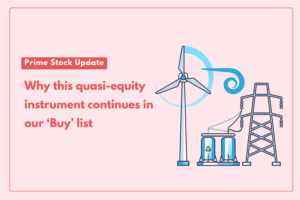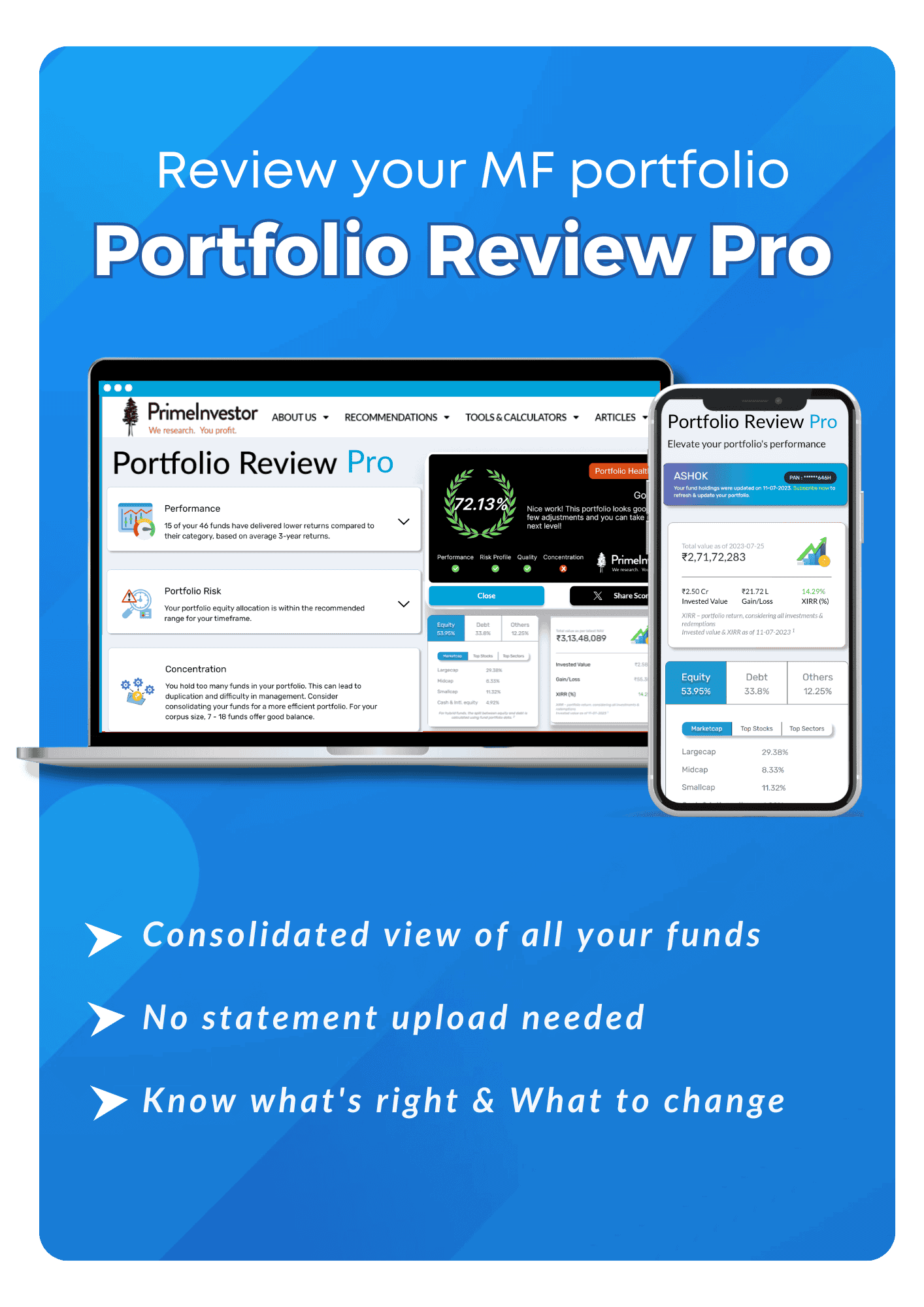In February last year, we had issued a buy call on the stock of a premier fashion player housing a vast number of national brands. The steps this company had taken to expand its offering range, a return of focus on margins, and the consumption promise all propelled the call. The stock rallied handsomely as well, post our call.
However, owing to two factors, the stock has since given up nearly 40% from its high and is currently about 25% below our original call price.

The stock here is Aditya Birla Fashion & Retail. We think the current price levels of Rs 208.9 offer a good opportunity to make further investments in the stock, and therefore average costs down.
Aditya Birla Fashion & Retail (ABFRL) has two lines of business – fashion, which includes its myriad brands across different segments, and retail, which is housed under the Pantaloons store chain. In this report, we detail the factors behind the stock correction and why ABFRL continues to be a sound long-term bet.
What has changed since our original call?
You can find the report detailing our original call on ABFRL here.
At the time of our initial recommendation in February 2022, the stock had completed a series of acquisitions to fill the gaps in its product portfolio. It appeared to be a steady earnings growth play, in the aftermath of Covid, with calibrated investments on expansion and growth. It was also exhibiting a strong margin and cash flow profile with low debt. Valuations also looked attractive against competition.
Since then, three factors contributed to a sharp correction in the ABFRL stock:
- In May 2022, the company threw markets for a loop and issued a private placement of equity shares to the extent of Rs.2,195 crore. This move caught the market by surprise as the dilution of equity appeared unnecessary in the wake of healthy cash flows and limited capex plans. The question then was what ABFRL intended to do with the fresh capital given that it had apparently filled out its product spectrum, and what the implications were for margins, cashflows, and earnings.
- The capital raise was then followed by a marked shift in ABFRL’s strategy from conservatism to aggression, indicating margin pressure.
- An external contributor was the overall market correction as well as consumption stocks taking a hit due to slowing demand. Stocks in the fashion space corrected 20-40%.
Here’s expanding on these factors, and why the ABFRL stock remains a quality long-term stock portfolio addition.
Stepping up aggression
ABFRL identified categories of innerwear, athleisure (under Van Heusen) and ethnic wear (under Tasva) to scale up and has stepped up investment in these areas. For example, for Tasva, the company has set an ambitious store expansion target of 75 stores by the end of FY23 from just under 10 at the end of FY22. Similarly, it recently acquired the India rights of Reebok, and will therefore invest towards its revival as the brand lags competitors such as Nike, Adidas, and Puma. The company was also in the news recently as a frontrunner to acquire a stake in TCNS Clothing, a listed women’s clothing wear that owns the W & Aurelia brands.
While these investments were underway even at the time of recommendation, there has since been a step up with more aggression on investments in all areas including enhancing visibility of existing brands. ABFRL also more than doubled advertisement spends – 2.3 times in the December 2022 quarter against the same period last year. This led to a hit on margins and profitability during for the quarter, and a lower-than-expected financial performance.
This apart, ABFRL has also incorporated a subsidiary to acquire and scale up D2C or ‘Online First’ brands. The December quarter was the first one with financial reporting for this subsidiary. The losses from this subsidiary also impacted earnings to the extent of Rs.34 crores. A quick glimpse of the April-December 2023 financial performance is given below, with a comparison of the pre-Covid FY20 period.
ABFRL intends to spend 3-4% of sales on advertising in its branded fashion and 2% in its retail Pantaloons business on a sustainable basis. The 2% higher spend in branded fashion in Q3, FY23 is temporary and has been carried out to do a brand refresh campaign after 2 years of Covid related disruption.
While this aggression in investments on store openings, acquisitions, and advertisement spends are set to hit margins and cash flows in short term, these are areas where the brand recall will play to its advantage in the medium to long term. This is explained further in the last section in this report.
Consumption slowdown
In the consumption space, overall demand is seeing a slowdown, with the lower end being a primary contributor. In ABFRL’s case, its innerwear, athleisure and the Pantaloons retail business reported significant slowdown in demand. However, its core fashion brands did exceptionally well.
Pantaloons saw its sales growth slowing down to 7% in the December 2022 quarter over the pre-Covid period) compared to lifestyle fashion brands growth of 43% in the same period. This slower growth in Pantaloons comes despite 45 new store additions. A range of moving factors including the back-to-office, festival season trends, pent-up demand, have been causing volatility in quarterly earnings for several companies in the consumption space. Page Industries, owner of the Jockey brand and a dominant player in athleisure segment also reported a slowdown trend.
However, Pantaloons as a whole is moving in the right direction after a few years of struggle. ABFRL’s strategy in this retail business appears to be working out with private labels accounting for ~70% of its portfolio and growing. Being a retail business, Pantaloons will be a steady margin business (lower than the fashion business) for ABFRL with improving financial profile, as the share of private labels goes up further. Pantaloons is also a vehicle for ABFRL to play the women’s fashion space where it is not yet a dominant player. While the majority of its stores are owned, it is also pursuing the franchisee model for standalone stores in Tier 2 and 3 cities. Westside and Reliance Trends are its major competitors apart from Lifestyle and Shoppers Stop at the premium end.
India provides a strong ground for fashion players due to rising per-capita income, favourable demographics and under-penetration of brands (discussed in detail below). ABFRL has positioned itself to being among the few players with a portfolio of national brands, and its aggressive expansion here will continue to hold it in good stead.
Growth potential holds
Barring ABFRL’s brands, there are only a few brands in India with annual sales above Rs. 1,000 crores - which also reveals how nascent the branded fashion business is. ABFRL is also playing catch-up in fast-growing segments such as ethnic wear and athleisure, and the current aggression in brand-building in these areas can serve it well.
To give perspective into the scalability of fashion brands in India, only competitor Arvind Fashions has managed to outpace on growth with its licenced brand US Polo Assn. hitting Rs.1,500 crore in sales for the April-December 23 period (it has Tommy and Arrow also under its fold). Successful homegrown brands such as Spykar, Mufti, Zodiac, Killer, Monte Carlo, Wrogn, etc are hovering between Rs.500 – 1,000 crore in revenue. There are over a dozen MNC brands as well, and thus ABFRL’s focus on national brands, range of brand portfolio, and brand visibility can help it break through.
The fashion business will be the key value driver for ABFRL with high margins and RoCE as it builds further scale. In its core brands, most standalone outlets are franchisee-owned. This apart, it is difficult for any urban retailer (multi-brand or regional) to run their men’s fashion section without ABFRL’s brands. Even in new categories, the plan is to take the franchisee model after initial scaling up on the brand, which will limit the extent of investment required on a sustainable basis and keep debt under control.
The new subsidiary, TMRW, set up to acquire Direct to Consumer businesses or online first brands, can also add diversity and reach to its portfolio. It has so far invested Rs.400 crores to acquire stakes in 8 such brands. Going by the management’s thought process behind this foray, it appears timely and strategic. The D2C revolution in India happened with a synchronised boom in digitization, e-commerce, affordable data and smartphone penetration over the past 6-7 years. Along with these, the democratisation of distribution by e-commerce giants made it lucrative and led to an explosion of D2C brands in the last few years.
To put in perspective, Roadster, an online-first brand incubated by Myntra is said to have crossed Rs.1,000 crores in sales in FY22. This is a phenomenal achievement considering the journey of fashion brands in India. Entrepreneurs and investors now unanimously agree that omni-channel is the way forward for D2C brands to scale up. But not all D2C brands are resourceful enough to scale up independently. This has led to a lot of action in this space, which is spearheaded by veterans (Mensa Brands and Goat Brand Labs) and thus ABFRL’s strategy to shop for brands that fits with its growth plans does make sense.
While this division may make quarterly losses and dent overall earnings, viewing it from the angle of a PE fund and measuring its success over time will throw performance in perspective. Over time, successful brands may make up for failures to achieve targeted returns on invested capital and that is how the D2C venture may work.
Valuations have also become more attractive in terms of market cap to sales or EV/EBIDTA – metrics we used in our original call. Market cap to sales moderated to 2X from the 3.5X and EV/EBIDTA moderated to 15X from 27X.
To summarize, a combination of both internal and external factors have taken a toll on growth and valuations for Aditya Birla Fashion & Retail. However, this does not tarnish the overall growth trajectory of the company and steps it has taken are all headed in the right direction. Therefore, the correction in the stock seems overdone and the current prices are attractive for investors to average the stock.
We will follow up with an update post Q4 results, if necessary, or if valuations need to be re-evaluated.
Disclosures and Disclaimers
The following Disclosures are being made in compliance with the SEBI Research Analyst Regulations 2014 (hereinafter referred to as the Regulations).
1. PrimeInvestor Financial Research Pvt Ltd is a SEBI-Registered Research Analyst having SEBI registration number INH200008653. PrimeInvestor Financial Research Pvt Ltd, the research entity, is engaged in providing research services and information on personal financial products. This Research Report (called Report) is prepared and distributed by PrimeInvestor Financial Research Pvt Ltd with brand name PrimeInvestor.
2. PrimeInvestor Financial Research Pvt Ltd, its partners, employees, directors or agents, do not have any material adverse disciplinary history as on the date of publication of this report.
3. I, N V Chandrachoodamani, author/s and the name/s in this report, hereby certify that all of the views expressed in this research report accurately reflect my/our views about the subject issuer(s) or securities. I/We also certify that no part of my/our compensation was, is, or will be directly or indirectly related to the specific recommendation(s) or view(s) in this report. I/we or my/our relative or PrimeInvestor Financial Research Pvt Ltd do not have any financial interest in the subject company.
I/we or my/our relative or PrimeInvestor Financial Research Pvt Ltd do not have beneficial ownership of 1% or more in the subject company at the end of the month immediately preceding the date of publication of the Research Report. I/we or my/our relative or PrimeInvestor Financial Research Pvt Ltd do not have any material conflict of interest. I/we have not served as director / officer, etc. in the subject company in the last 12-month period.
4. I, N V Chandrachoodamani, hold this stock as part of my investment portfolio. I/analysts in the Company have not traded in the subject stock thirty days preceding this research report and will not trade within five days of publication of the research report as required by regulations.
5. PrimeInvestor Financial Research Pvt Ltd has not received any compensation from the subject company in the past twelve months. PrimeInvestor Financial Research Pvt Ltd has not been engaged in market making activity for the subject company.
6. In the last 12-month period ending on the last day of the month immediately preceding the date of publication of this research report, PrimeInvestor Financial Research Pvt Ltd has not received compensation or other benefits from the subject company of this research report or any other third-party in connection with this report.







